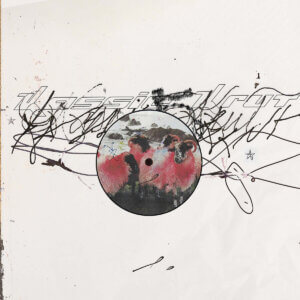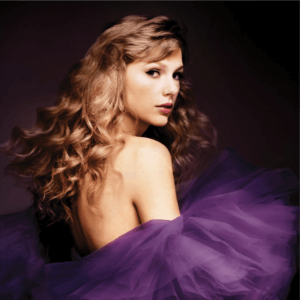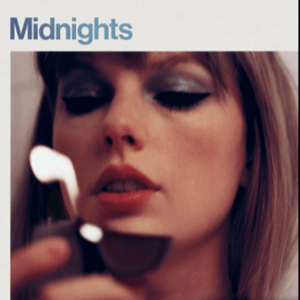
9
Evermore
Taylor Swift
It was only July when Taylor Swift surprised fans with her eighth studio album Folklore. The record made completely in quarantine and remotely with producer Aaron Dessner of The National wasn’t only a surprise because it was her first album that wasn’t launched with months of fanfare behind it but also because it captured something that many people all over the world needed to hear at that exact moment. The album went on to not only be a huge success but also made so many people who had initially scoffed at anything Swift, sit up and finally take notice. Well, she has done it again. Announced early this morning and out everywhere mere hours later, Taylor Swift has dropped her second surprise album of 2020, the expansive and beautiful Evermore.
Again working with her Folklore collaborators, Dessner, Jack Antonoff and Justin Vernon while expanding her cast to include the rest of The National and the sisters of Haim. Expansive is a great word to describe Evermore. It expands on the understated production of that last album while adding a multitude of colour and depth to Swift’s personal, and sneakily personal character studies. The album may have arrived as a surprise but the thing that is less surprising, especially after all the work she has done this year, is that the album is not only one of her best but one of the best of the year period.
Right off the top, “willow” seems familiar. It takes up the same space sonically as much of the songs on Folklore but with a bit more of a lighter touch musically. Whereas the last album was done in a way, remotely, to how Swift had previously produced her music there was more of a trepidatious nature to the proceedings as if, even in its more confident moments, it felt cautious. On Evermore, this circumspection is completely absent and we have the Taylor we’ve always known from her former albums back. Her voice, confident and comfortable in her now more lived in surroundings. “willow” showcases the causal nature in which Swift is able to write lyrics. She is consistently able to take a phrase, the way a real person would say it and make it, well, sing. “The more that you say, the less I know/Wherever you stray, I follow/I’m begging for you to take my hand/Wreck my plans, that’s my man” and it is quietly powerful. “champagne problems” sets a new conceptual precedent that runs throughout Evermore. The song about a woman who turns down a very public marriage proposal isn’t about something that Swift had actually lived through, but one that exists emotionally in how it resonates with the themes that she had previously tackled in a more directly personal way. “gold rush” reunites Swift with Jack Antonoff and it is remarkably the outlier on the record. With it’s four on the floor drum beat and a vocal melody that is able to effortlessly float through it, the song is about a daydream moment after a shared, brief interaction with a stranger on the street. Even with something that commonplace she can turn a lyric like “What must it be like to grow up that beautiful?” Into something devastating. Album highlight “’tis the damn season” hits hard because of Swift’s melody that carries the song over an arpeggiated guitar and some well placed beats. As strong as the chorus is, it’s Swift’s way around a bridge that really makes this song soar so when that last chorus kicks in, it’ll take everything in your power to make the goosebumps stay down. There are so many lyrics all over Evermore that Swift wields like a weapon and they will destroy you. On “tolerate it”, about a one sided love affair, she uses that specific power when she sings, “I know my love should be celebrated/But you tolerate it” and it hurts as much as it does to the song’s protagonist. Haim show up subtly on the country tinged “no body, no crime” and in a cute and then shocking way, the song is sung from the perspective of someone who thinks her best friend Este (cute) was killed by her husband (shocking). The National join Swift on “coney island” which works much better than you would imagine. After Folklore this just seemed like a no brainer and if Justin Vernon and Swift can duet comfortably on a song then why shouldn’t Matt Berninger join in on the fun. They honestly sound wonderful together.
Evermore is so much more than just a companion record to Folklore and it’s nice that Swift has specifically noted that this is her ninth studio album, not just 8.5. There is so much to dig into here in the same way that all of her records beg repeated listens. If we are going to say Evermore is Folklore’s sister album, then maybe it’s good to point out that Evermore is the younger, more confident sister who isn’t as world weary as her elder. “ivy” bounds and bounces into your headphones with a brightness that is addictive, “long story short” is all synths and a broken down break beat that comes into focus during the chorus, effectively bridging the production styles of Swifts more blatantly pop era to the, equally as hooky, but more understated present day. By the time we get to the final, title track featuring Bon Iver, Swift has allowed us, once again, a momentary respite from the anxiety of everyday life at the moment. We are truly lucky to be able to have an artist, not only as talented as Swift is, but one that is so good at sharing experiences that we are able to relate to, that we can take solace in and remember, if even for an hour at a time, we aren’t alone out there.
Latest Reviews
Tracks
Related Albums
Related News
Advertisement
Looking for something new to listen to?
Sign up to our all-new newsletter for top-notch reviews, news, videos and playlists.














